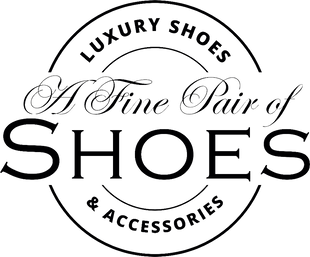MATERIALS
Calf Leather
 |

|
Calf leather is produced from the hide of a young cow. A calf is under a year old and weighs less than 150 kilograms. Calfskin is either of South American or European origin. The structure of calf leather is particularly firm and even. The grain of calfskin is finer than that of adult animals and it is one of the highest quality leathers because of its softness and fine grain, as well as durability. Box calf is called chrome tanned calf leather. In the UK it must be black coloured. Box calf is used for making uppers for men's and women's shoes. Partially also for bags and saddlery. (Care Guide for Smooth Leather) |
Suede
|
Suede is the name of two types of leather. One is the split suede with a double-sided velour surface. The second is reverse suede, or the uncoated flesh side of the hide. In contrast to the very velvety nubuck, suede is significantly rougher. The most common use of suede leather is on shoes and gloves. In both cases, the protective function and the strong breathability of this type of leather is essential. Suede is very porous and as hands and feet sweat very quickly, this is an important advantage. (Care Guide for Suede & Nubuck) |
 |

|
Grain Leather
 |
 |
Grain leather refers to the smooth, grained surface facing the hair side (or the outside, if no hair is present) in leather. Each type of leather has a unique characteristic grain pattern. The pore density is much heavier on cow leather than pig for example. The grain pattern can be changed by embossing or staining the leather. The grain pattern differs across the surface of the same animal skin. In the middle of a skin, the leather is mostly fine grained/ pored, and towards the edges it becomes more coarse-pored. The appearance of grain is also often disrupted by natural wrinkles and this is the why grain is often embossed for shoes, just for consistency. (Care Guide for Smooth Leather) |
Rough Out Suede
|
Rough-Out Suede is a tough suede from the underside of the skin. It can be left untreated, or coated with wax on the surface, which gives it a more rugged character and some water resistance. This leather is particularly suitable for casual boots and shoes for all-year round wear. (Care Guide for Oiled, Waxy & Roughout Leather) |
 |

|
Shell Cordovan
 |
 |
Cordovan is horse leather. Only the leather from the rear flanks of heavy workhorses is suitable. A few millimetres below the surface of the skin, there are two round pieces (shells), which have a highly-compressed smooth fibre structure. Cordovan contains a lot of grease, making it very smooth, shiny and water repellent. These pieces are about as big as a sheet of paper. Cordovan is one of the most expensive leathers, especially as the demand clearly exceeds the supply. Suitable horse skins are very rare and are produced from a few specialist manufacturing companies such as Horween in the USA. (Care Guide for Cordovan Leather) |
Waxed Calf
|
Waxed Calf is made from high quality leather that’s been infused with a wax and oil compound to make it firm but flexible while naturally repelling moisture and protecting the leather. The wax creates an often scratch-sensitive finish and in turn the leather quickly gets a distressed patina which is a desired effect. (Care Guide for Oiled, Waxy & Roughout Leather) |
 |

|
Patent
 |
 |
Patent leather is a high gloss, grain free leather, which has been gloss treated on the surface or covered with a glossy, mirror-smooth film. Patent leather was historically used as a special occasion item only, but today, such leather is used every day as bags or wallets. Wear correspondingly becomes visible faster. Other smooth leathers are similarly sensitive, but their softness and the matte surface mean that damage is less obvious. The eye perceives differences on gloss surfaces faster than on matte surfaces. With patent, scratches and other damages should avoided as much as possible since the coating cannot be repaired. (Care Guide for Patent Leather) |
Deerskin
|
Deerskin Leather is a leather created from the hide of deers. Historically, Deerskin Leather was popularised by Native Americans and the American frontier culture. They generally used it for clothing and moccasins. Today Deerskin Leather is used for a wide variety of items including shoes, coats and luxury handbags. Deerskin Leather isn’t a mass produced material, therefore it has exclusive connotations and luxury appeal. This high-quality leather has a number of benefits ranging from feeling soft, to its durability and breathability. Being a lightweight and thin leather also ensures that Deerskin has stretch. Another popular characteristic of Deerskin Leather is that even when it gets wet and dries, the soft texture still remains. (Care Guide for Speciality Leather) |
 |

|
Kudu
 |
 |
Kudu leather is an antelope from southern Africa with unique characteristics. The Kudu leather is available as a suede and a leather version since it has a very soft suede nap on the reverse side and a buffed finish on the grain side. This leather is characterised by a high degree of strength and durability along with a very natural appearance including superficial cuts and blemishes from where the animal ran wild in the bushes. (Care Guide for Suede & Nubuck Leather)(Care Guide for Smooth Leather) |















